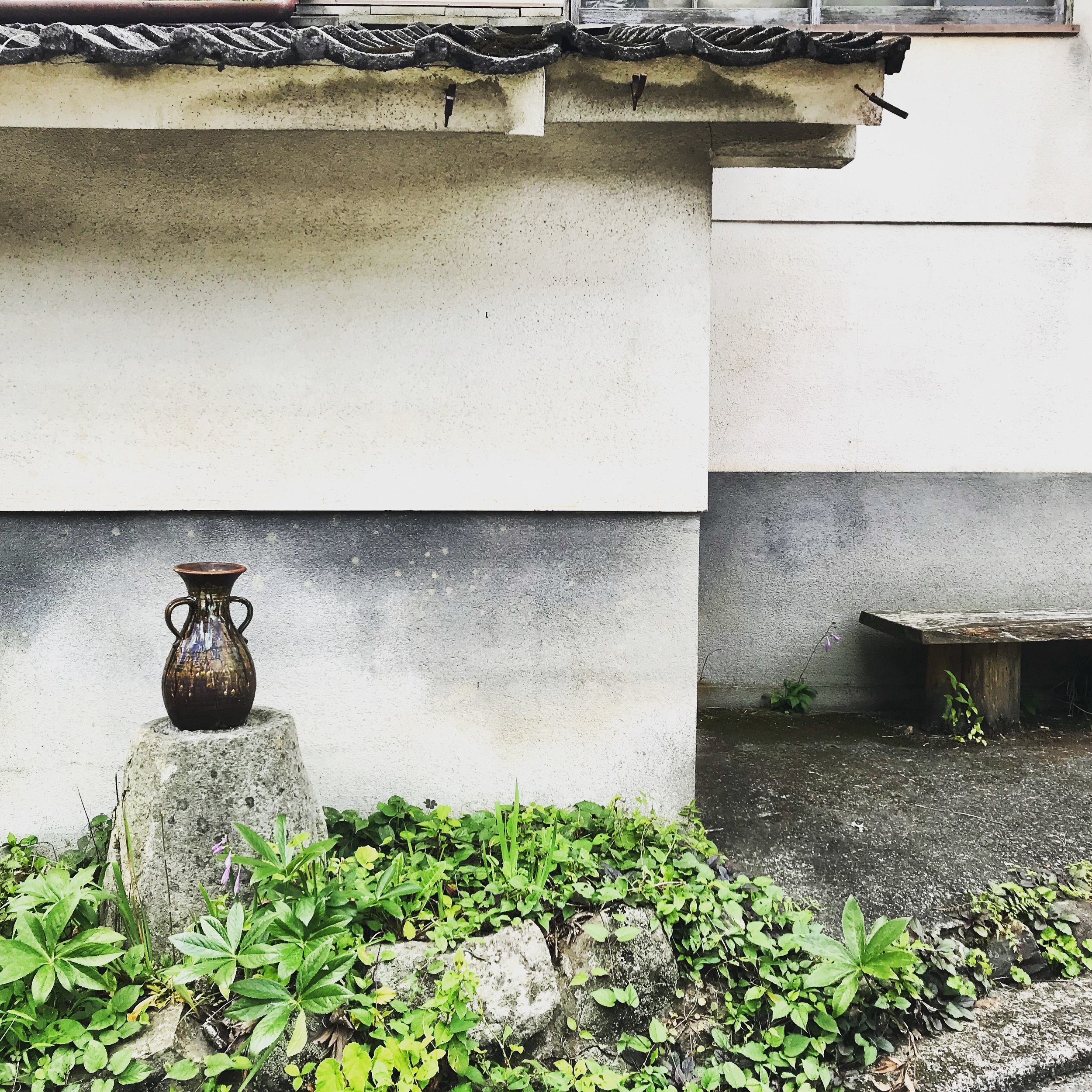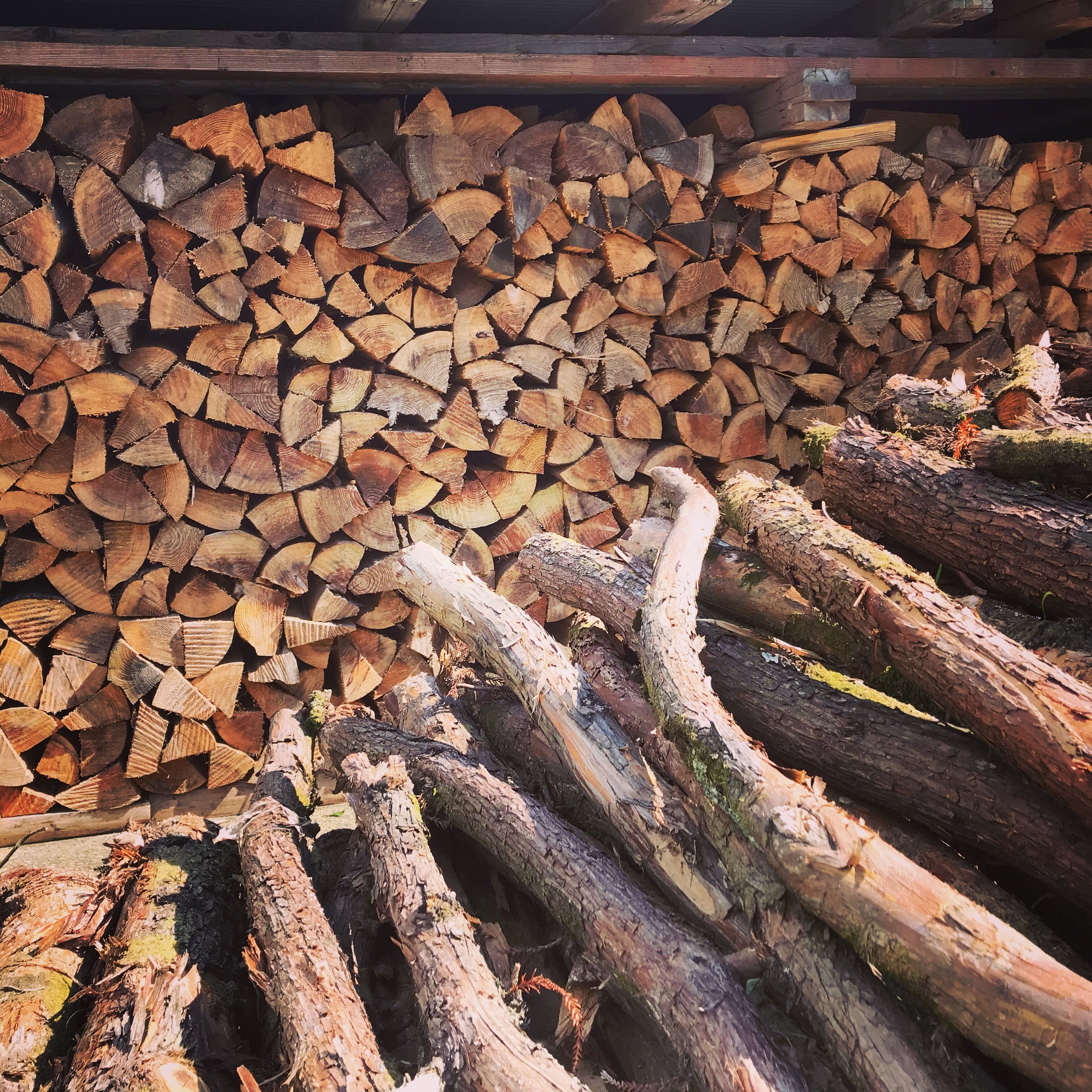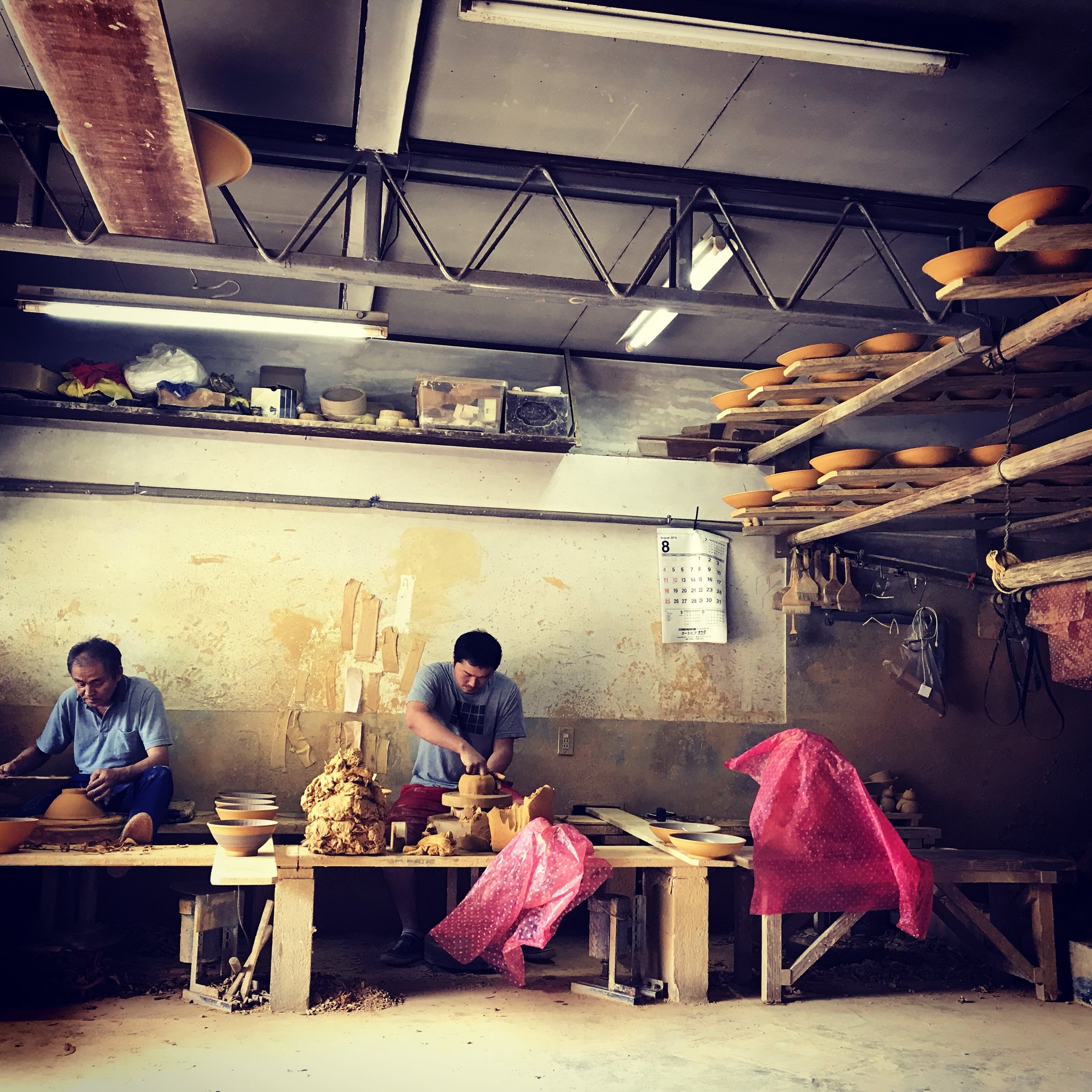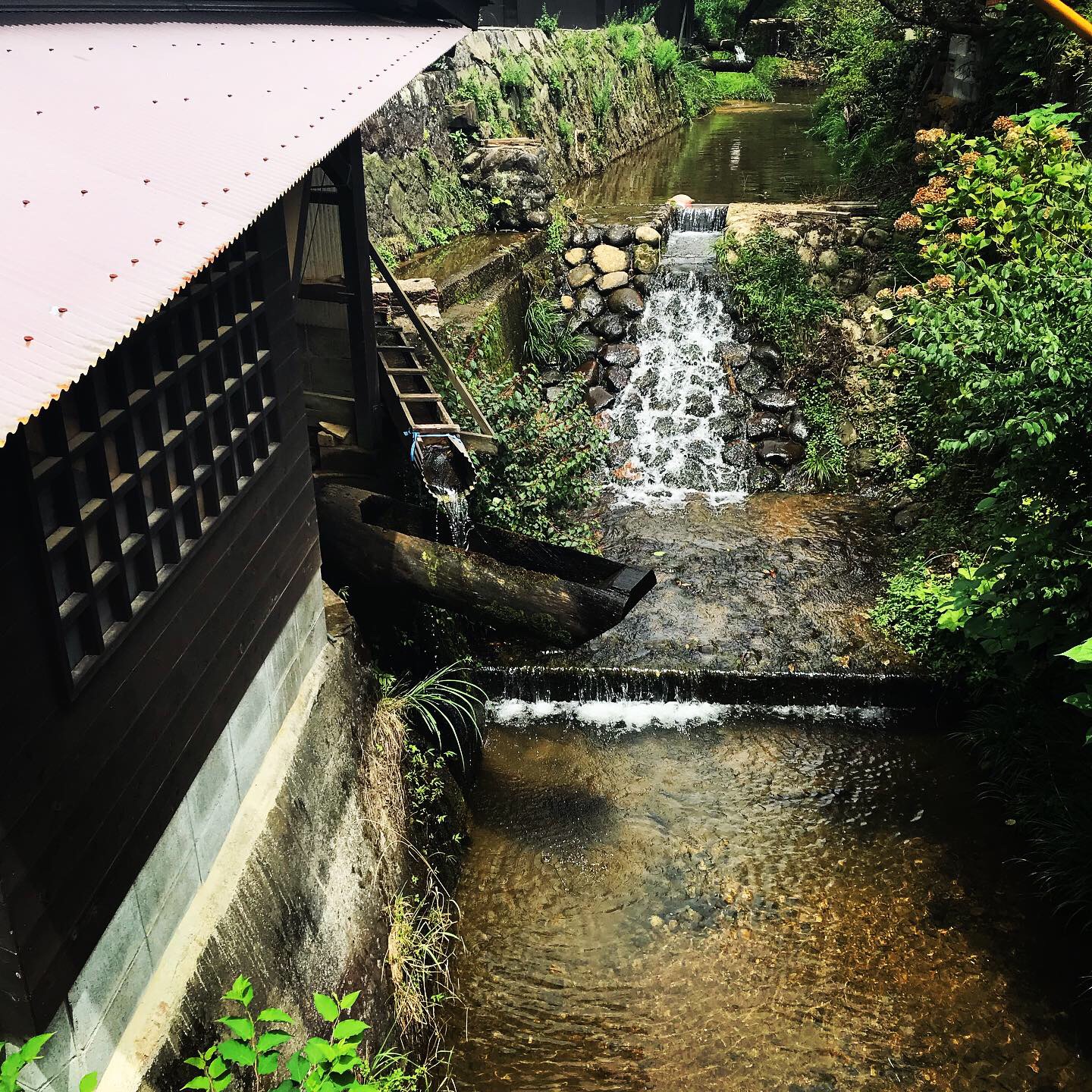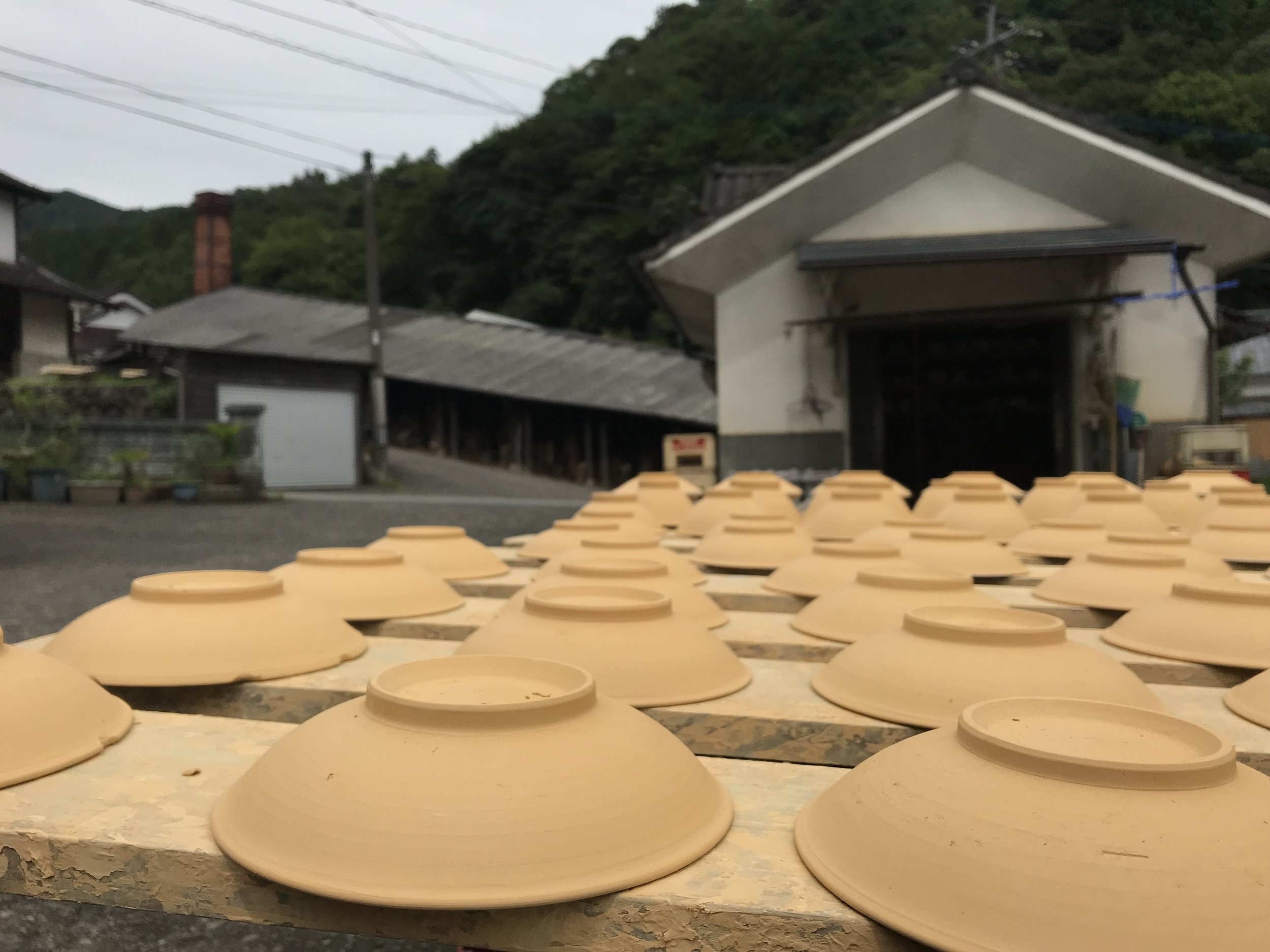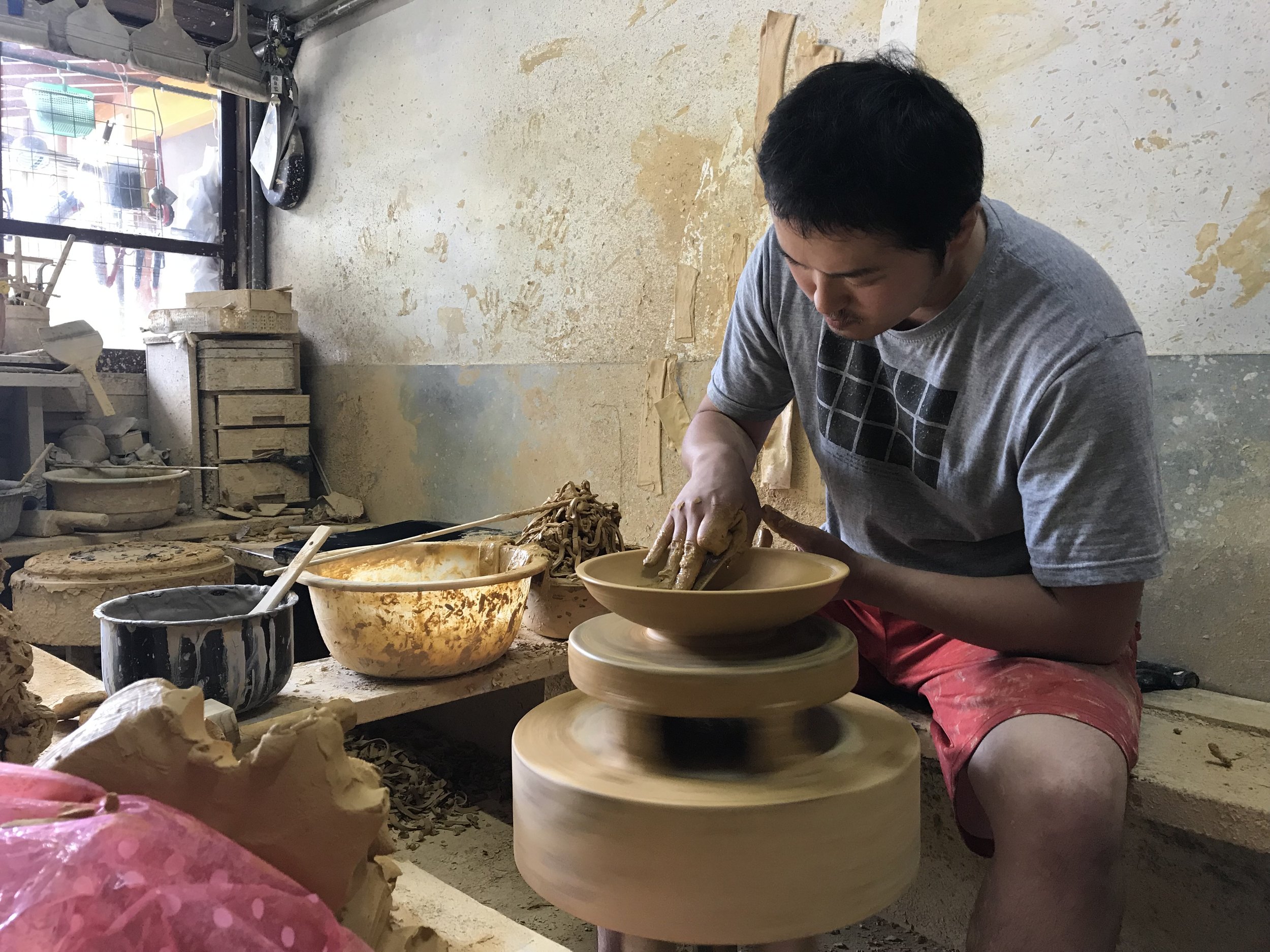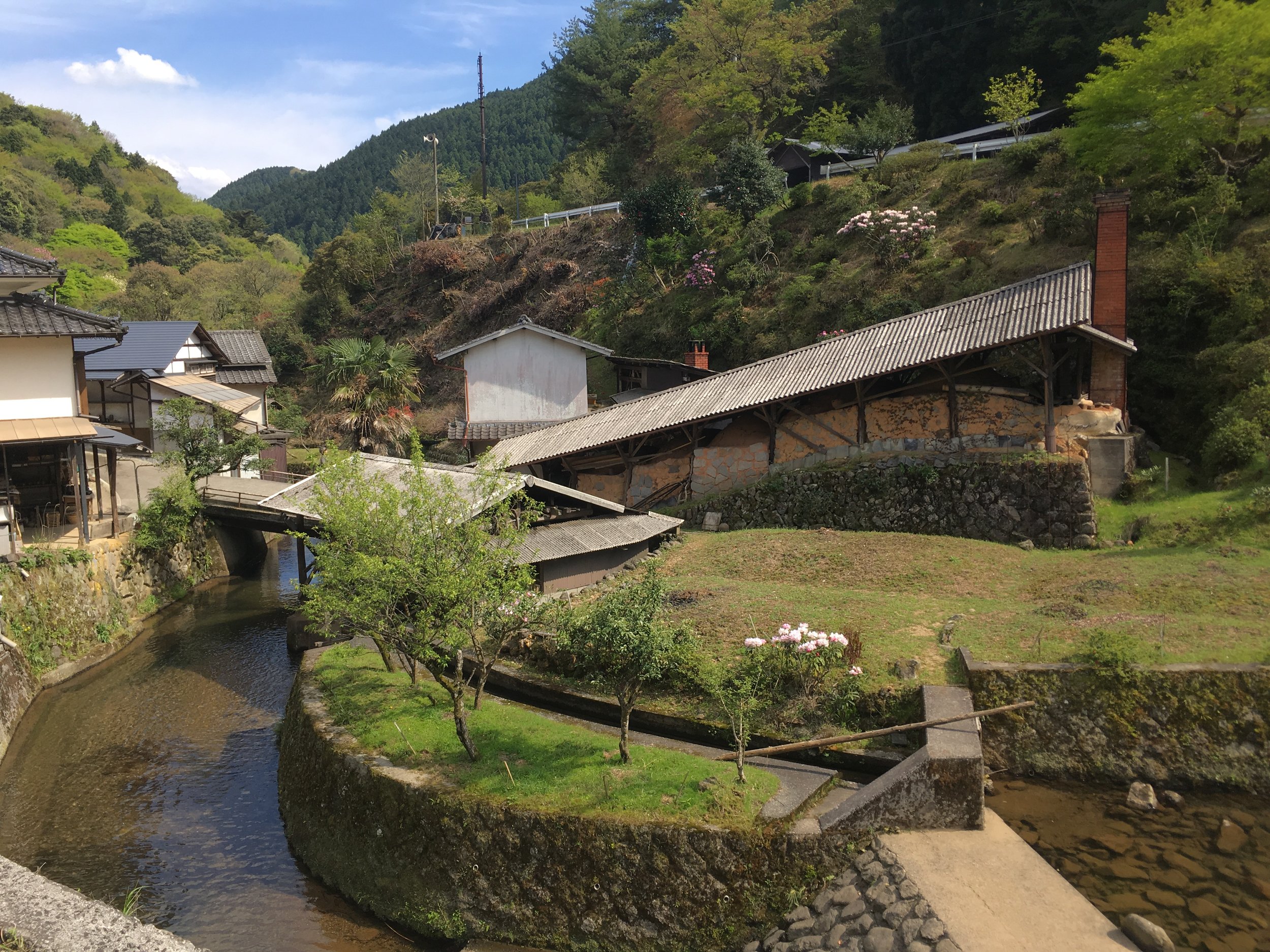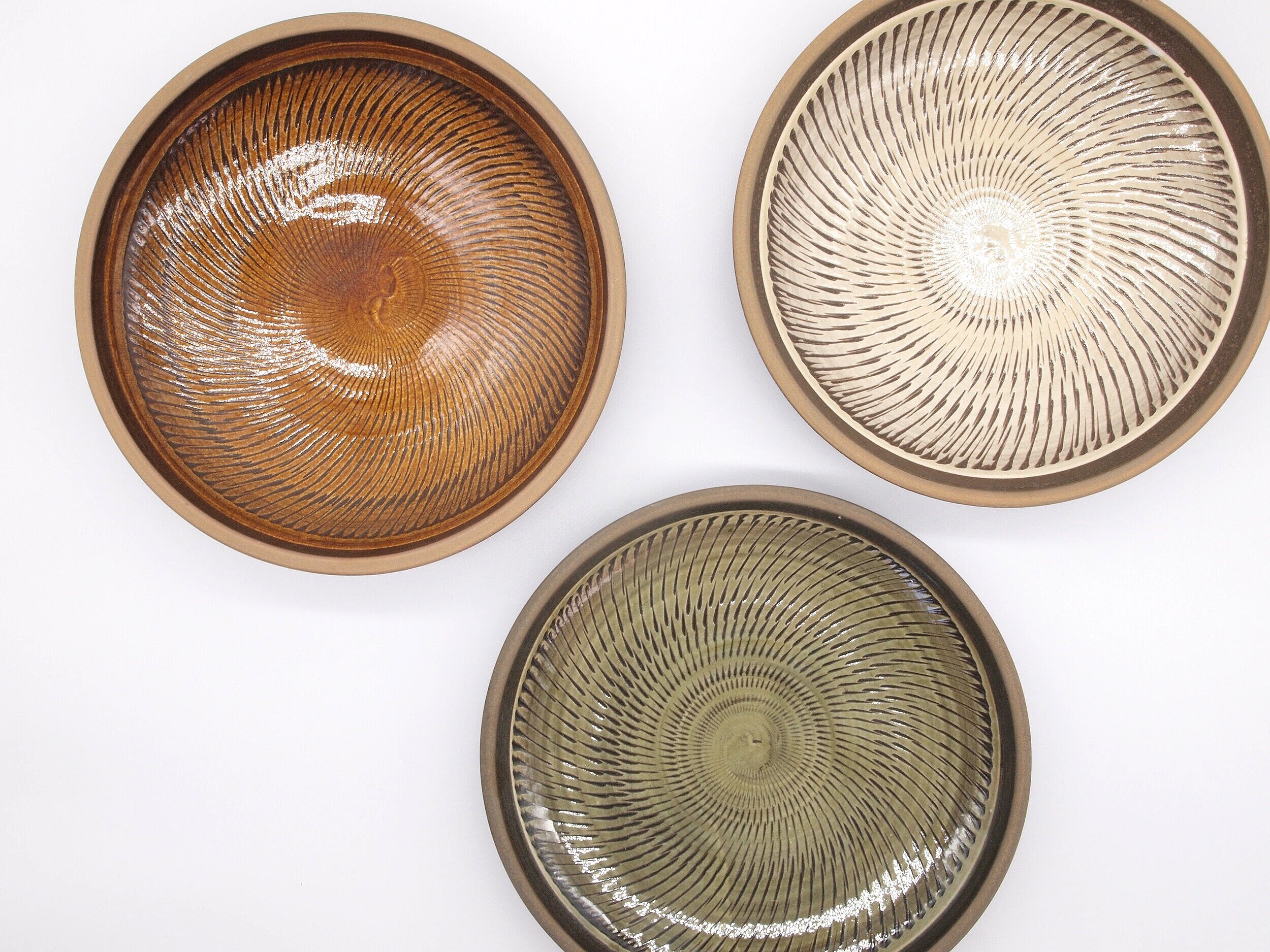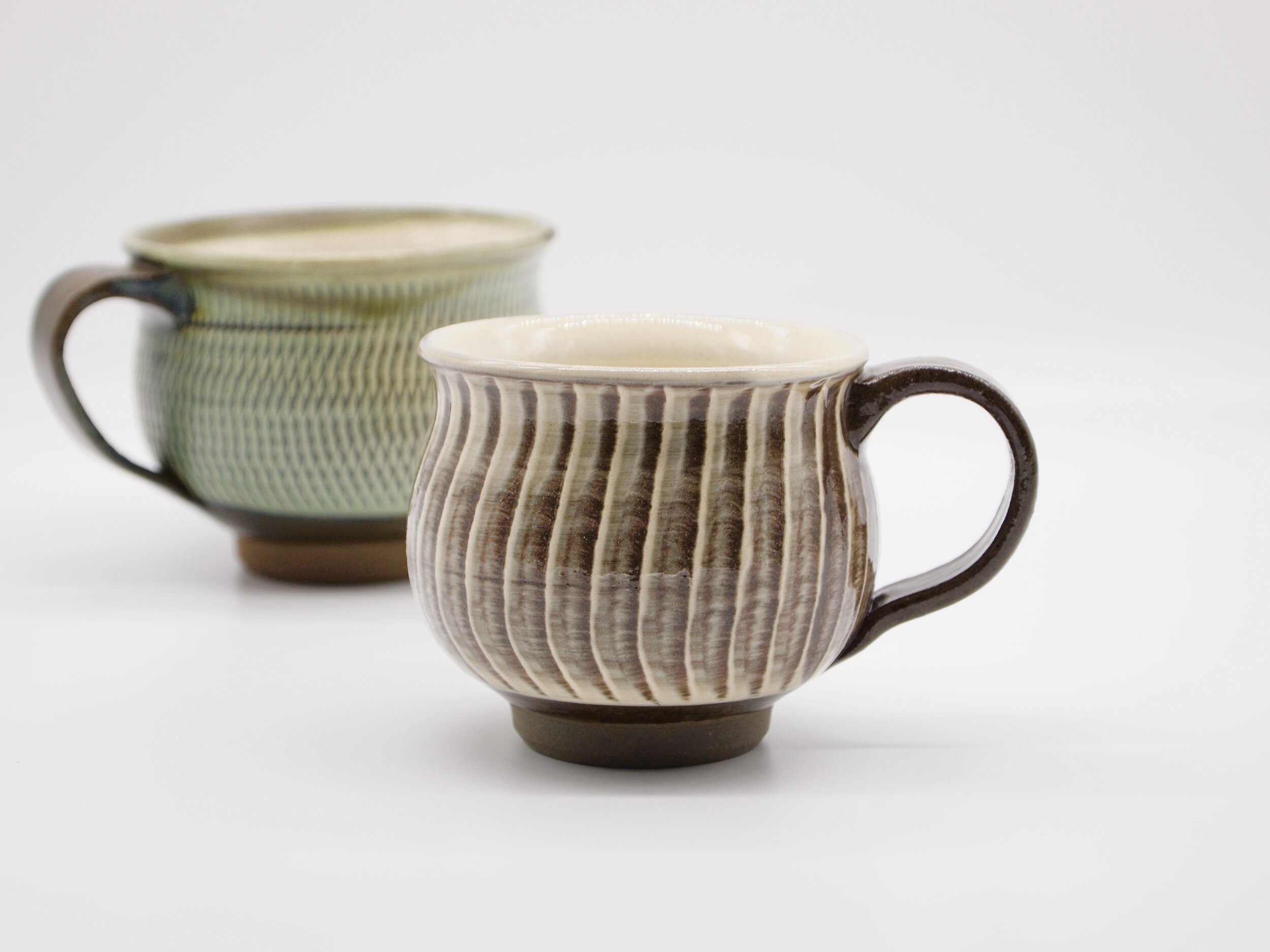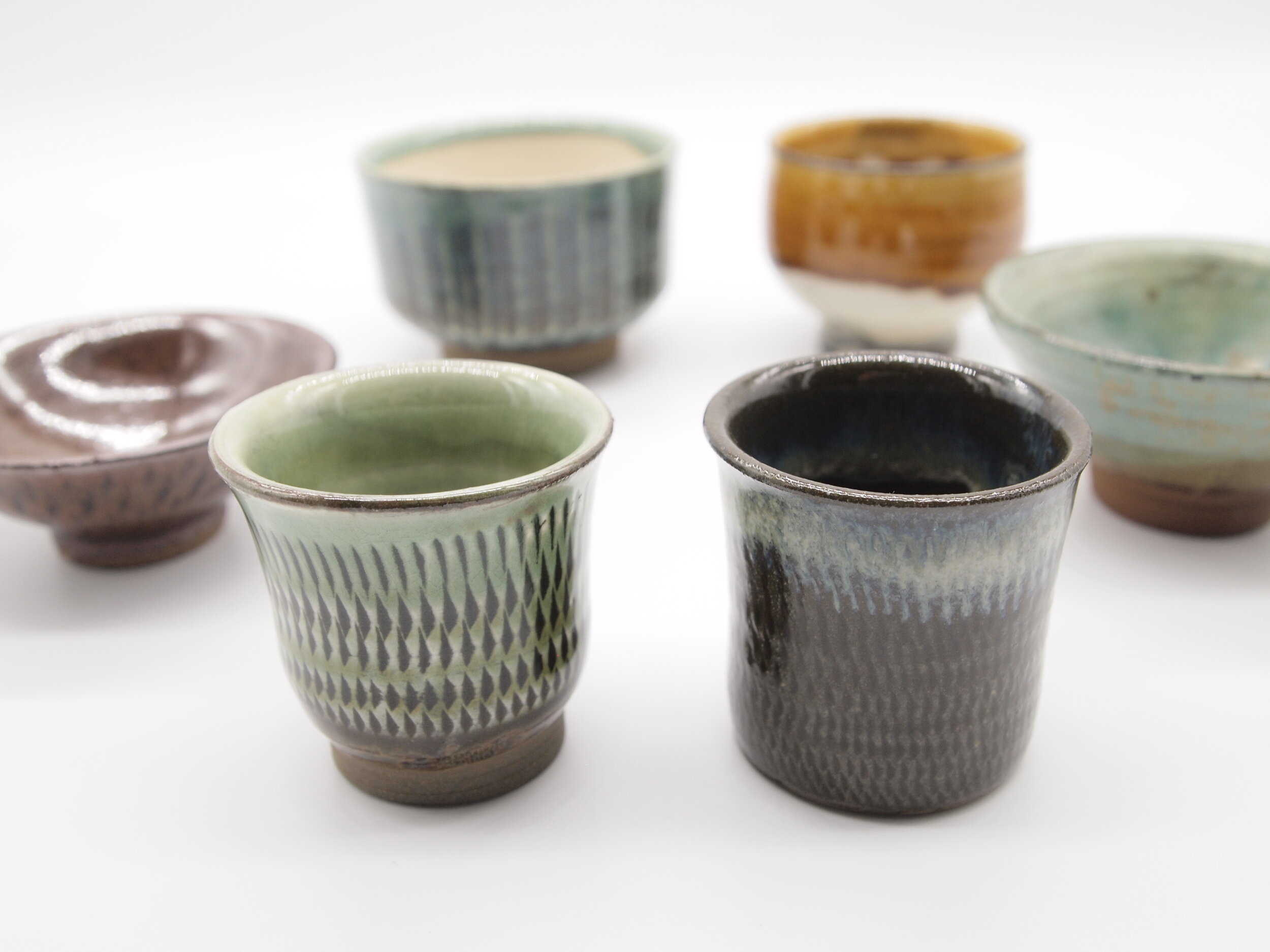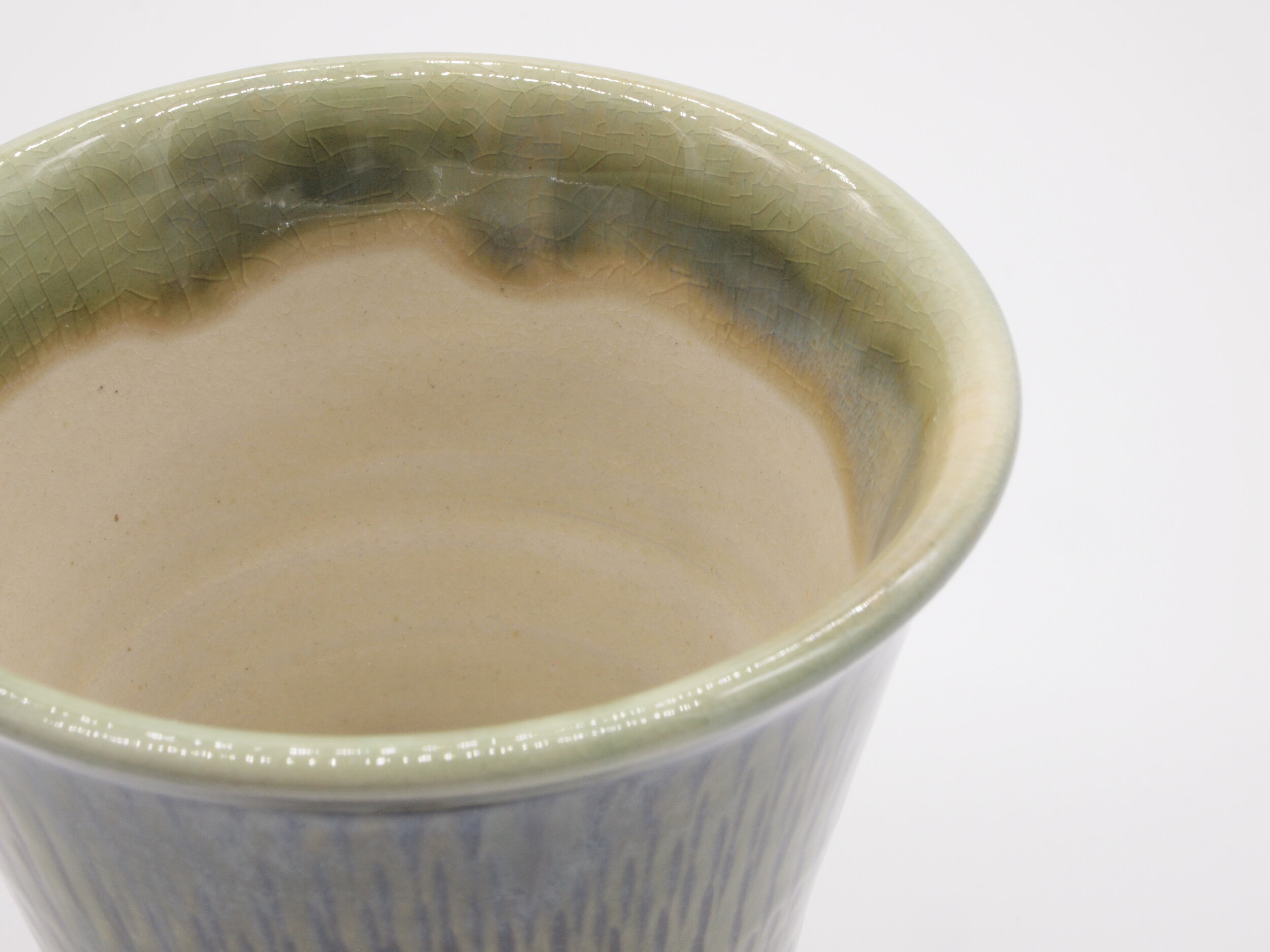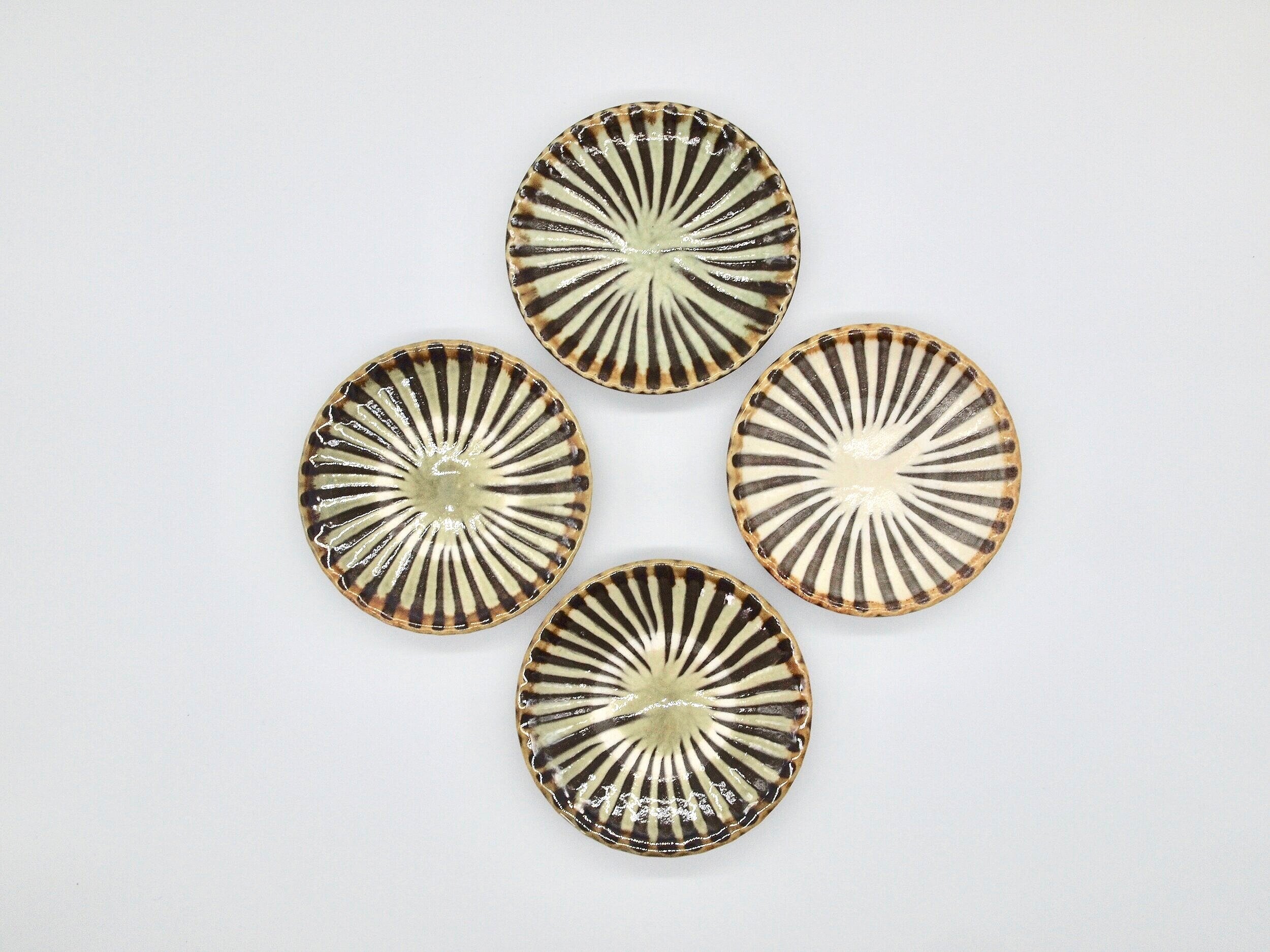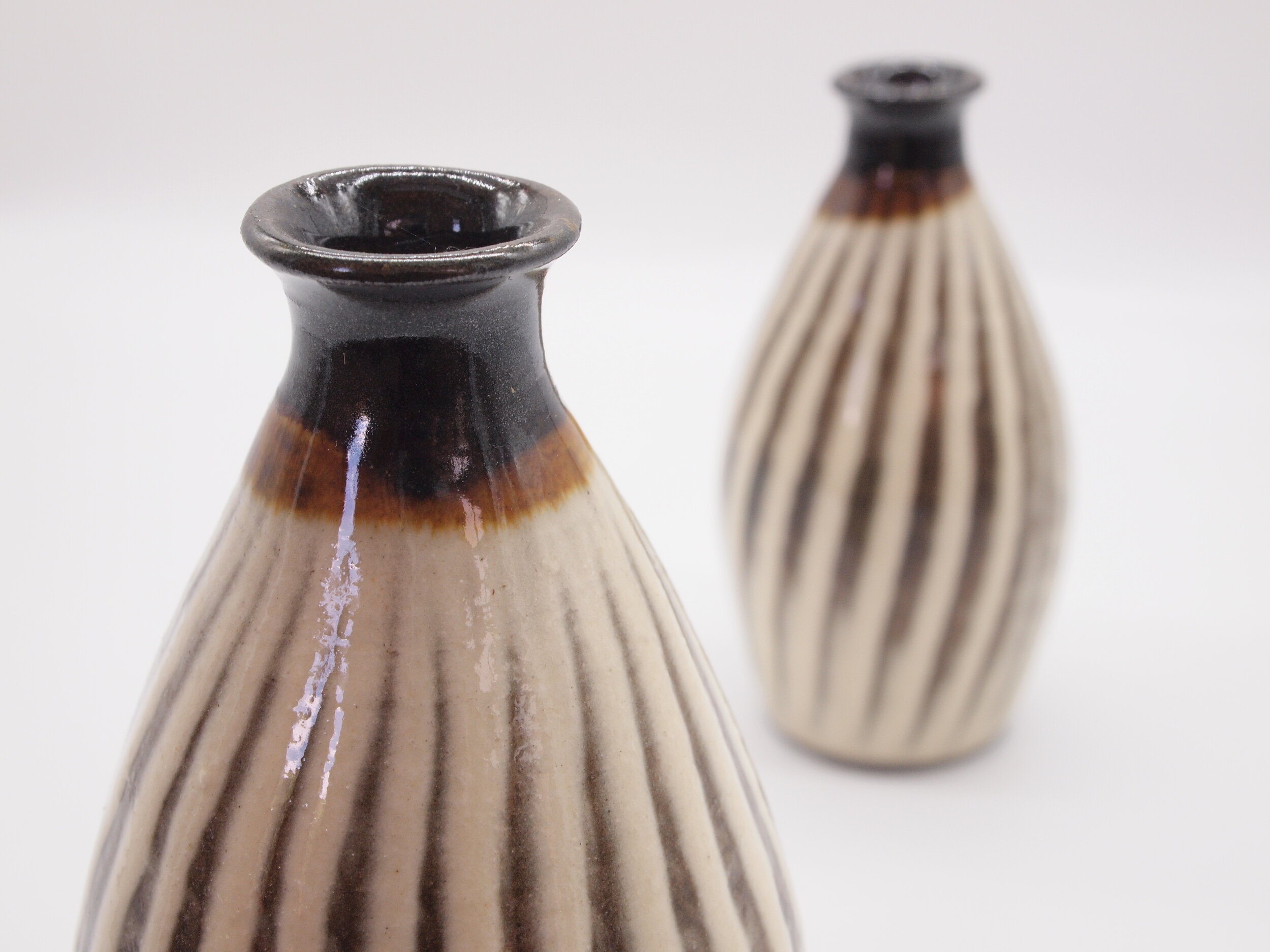onta ware
hita, oita
In the mountains of north-central Kyushu, near to the town of Hita lies Onta, the small village where such unique pottery is being made. What makes Onta so special? Onta pottery production is community-based and most inhabitants of this village have been engaging in this craft of pottery making since the early 18th century. There are only 9 households in the village of Onta, who make traditional ceramics using locally sourced and produced materials. Pottery-making skills are imparted to the eldest son of each family by the father. It might sound like they have been conservative in guarding the craft so exclusively, however this is the main reason why they could preserve the tradition and maintain a close-knitted community until now. The ceramics made by all households are collectively marked with the Japanese characters for “Onta (小鹿田)” in place of each individual potter’s name.
The soft clay used in the production of Onta potteries (i.e. Onta’s soft clay) is dug locally from the mountainside near to the village. It is then pounded into powder for 20 to 30 days by a wooden hammer (called “Karausu” in Japanese) which is powered by running water of the river which flows through the village. The clay is then filtered in the pools and dried off, before being kneaded and formed into shape by using a traditional kick-wheel. Following another drying process, it is then colour-glazed. Onta features simple designs and earthy colours. All glazes are prepared from natural materials such as straw, ash, wood, copper and iron. The colours are mainly seiji (green), ame (brown), and kuro (black).
Finally, dried ceramic pieces are fired in the wood-fed kiln at around 1250C for 36 to 55 hours. This type of kiln is called “Noborigama” in Japanese and contains 8 separate burning chambers in the communal one. During this long firing duration, the fluctuating temperature has to be steadily maintained. Therefore, each potter has to go without sleep to tend the kiln fire throughout the night to regulate its temperature. And the kilns are burnt only 4 or 5 times a year. Such is the ancient technique of Onta pottery.
Onta pottery gained international recognition and acclaim when the famous British potter, Bernard Leach visited Onta in the 1950’s. There he worked alongside the local potters, sharing his skills with them and also learning from them at the same time. Over the years, many renowned Japanese artists have also visited Onta and collaborated with the local artisans.
In the year 1970, Onta pottery was designated as an “Intangible Cultural Property” of Japan, and later upgraded to the status of “Important Intangible Cultural Property” in 1995. This official accreditation means that the local potters have an obligation to continue with their traditional methods without adopting the use of modern machinery and materials.
In July 2017, Onta village was severely damaged by landslides due to an extremely heavy rainstorm. The mountain where the potters dig for clay collapsed and most of the wooden hammers (Karausu) were either washed away or damaged by the muddy flow. Due to this disaster, they had to stop the production for a while to fix their workshops. Fortunately, everything has been restored and production has resumed back to normal by now.

